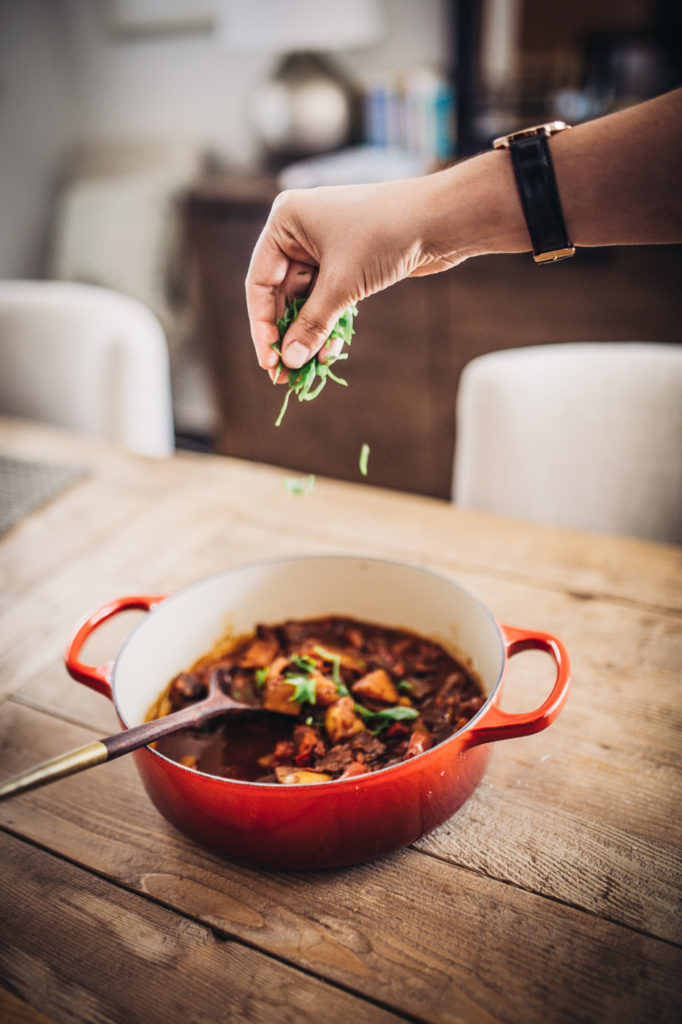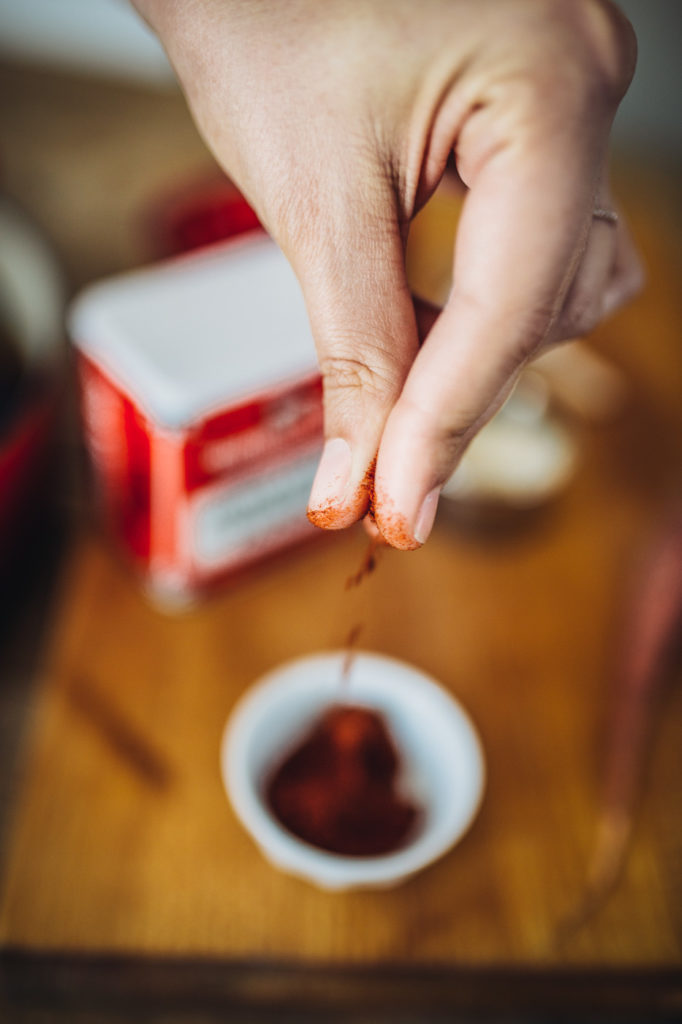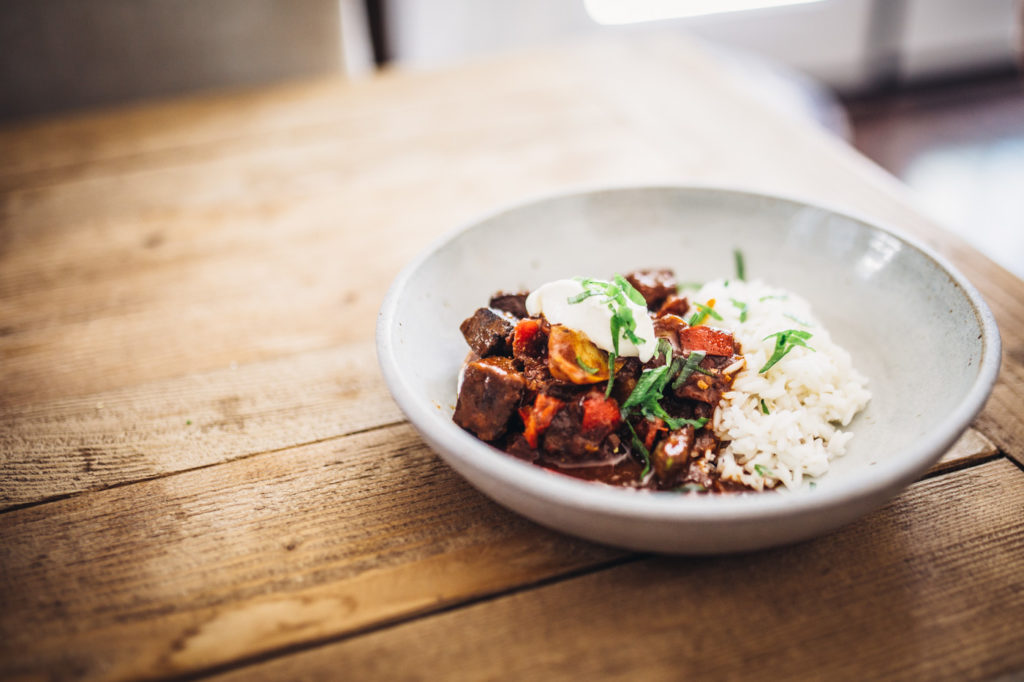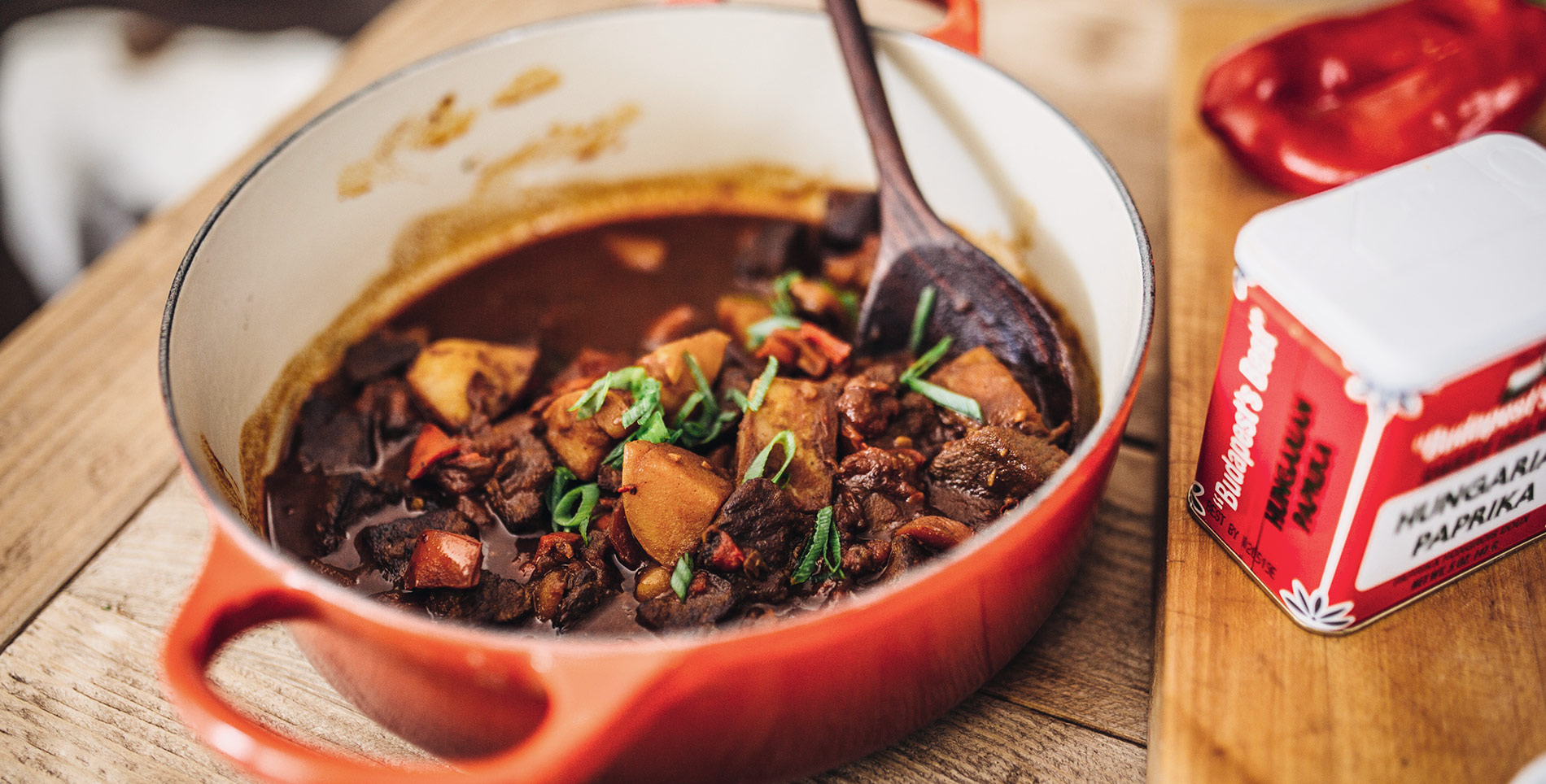It was fall. A heavy rain had come the day before, and by morning a thin layer of gray clouds still hovered over the city, slowly receding into the mountains. I drove to my office with the heater’s warmth seeping through the vents and flicked the windshield wipers once or twice to clear the faint drops of water.
I usually packed my lunch, but I didn’t need one today because I had been invited for a home-cooked meal. The executive director of the museum where I worked wanted to show his appreciation to our staff, and asked us to walk over around noon.
Karl Hutterer and his wife lived across the street from the 1920s building where our offices stood among oak trees and a bustling creek. He was also the proud owner of two new baby goats, animals he remembered caring for as a child growing up in Hungary. As the group of us approached, he grinned wholeheartedly behind the gate, pointing at Goldie and Frankie trotting around the yard.
After a few minutes, he ushered us inside, where a pot of goulash had been simmering on the stove since morning.

——
For hundreds of years, Hungary’s land was occupied by warriors like the Huns, Mongols and Turks, who helped inform the country’s culinary legacy. Chilis were introduced to Eastern Europe by way of the Americas (Mexico, very likely), and were first grown in the walled gardens of the aristocracy before gradually making their way to peasant gardens.
In Hungarian, goulash comes from the word gulyás, meaning “herdsmen.” As you might imagine, the iconic dish has roots in peasant cooking, dating back to the 9th century when groups of shepherds tended cattle in the countryside for months at a time.
Herdsmen cooked simple meals in cauldrons over an open flame with ingredients like bacon, onion, salt, black pepper, and eventually dried red chiles from local villages.
By the end of the 19th century, Hungarians bred several new varieties of chilis, developed processing methods, and created paprika—the country’s most iconic spice—made from Capsicum peppers. From seed to powder, the process of making paprika takes seven months. Today, there are eight grades of paprika that range in heat level, and the peppers are traditionally strung on a line and dried in the sun, then ground to create its brick red blend and subtle, sweet flavor.


——
My coworkers and I formed a line in the kitchen and grabbed bowls from the countertop, cradling them in our hands until our turn arrived. Karl scooped rice, while his wife ladled a fragrant stew over the top, studded with red peppers and potatoes. Goulash is the national dish of Hungary, so it seemed only appropriate for Karl to share such a beloved meal with his guests that afternoon.
Scattered among the patio and living room chairs, we paused our conversations about fundraising, the upcoming exhibits, and board meetings, and instead turned our attention to the weather, holiday plans, and the stew in front of us we so eagerly consumed.
RECIPE
Hungarian Goulash
This recipe is all about layering. You add an ingredient, stir, cook and wait. Then you add another and another, and repeat the process until everything is in the pot, sufficiently cooked and flavorful, and left to simmer until the meat is tender and the potatoes are just shy of breaking away from their skins. The use of spice here is not subtle, calling for ¼ cup of sweet Hungarian paprika, which can be ordered online if it’s not available in your local grocery store.
Serves 6 to 8
Ingredients
- 1 ½ pounds beef (stew meat), cut into 1-inch pieces
- 3 tablespoons canola oil, divided
- 2 small brown onions (about 1 pound), diced
- ¼ cup Hungarian paprika
- 4 cloves garlic, minced
- 2 to 3 red bell peppers, seeded and membranes removed, cut into ½ inch pieces (1 to 1 ½ pounds)
- 2 tomatoes, diced
- 2 carrots, diced into ½-inch pieces
- 2 medium Yukon or red potatoes, cut into ½-inch chunks
- 5 cups beef stock
- 2 bay leaves
- ½ teaspoon freshly ground black pepper
- 1 cup white basmati rice
- 1 ¾ cup water
- Salt
- Sour cream and green onions, for garnish
Directions
Heat a large cast iron Dutch oven over medium-high heat. While you wait, season the beef with a good pinch of salt on all sides. Add 1 tablespoon of the canola oil, then arrange the beef in a single layer (do this in 2 or 3 batches). Cook for 2 to 3 minutes per side, until the meat is golden; remove to a plate lined with a paper towel. Repeat with remaining oil and beef.
Reduce heat to medium-low. Add the onion and a pinch of salt; cook for 5 to 7 minutes, or until the onions are just beginning to brown and are covered with beef drippings. Add the bell peppers and cook for another 5 to 7 minutes, until tender, seasoning with another pinch of salt. Add the paprika and garlic; stir to combine. Add the tomatoes, carrots, potatoes, stock, bay leaf, and 1 teaspoon salt. The broth should just cover the meat. Bring to a boil, cover, and reduce the heat to medium low. Simmer, partially covered, for 40 minutes, or until the beef is tender. Simmer uncovered for 20 minutes more, or until the sauce has reduced and the stew has thickened.
While the beef simmers, make the rice. Rinse the rice in cold water and place into a stock pot with 1 ¾ cups filtered water and a pinch of salt. Bring to a boil, then simmer, partially covered, for 12 to 15 minutes, or until the water has evaporated. Remove from heat and leave covered for a few minutes before fluffing.
To serve, place a scoop of rice on one side of a bowl, and a ladle of stew on the other. Sprinkle with green onions and finish with a dollop of sour cream.









Our comments section is for members only.
Join today to gain exclusive access.